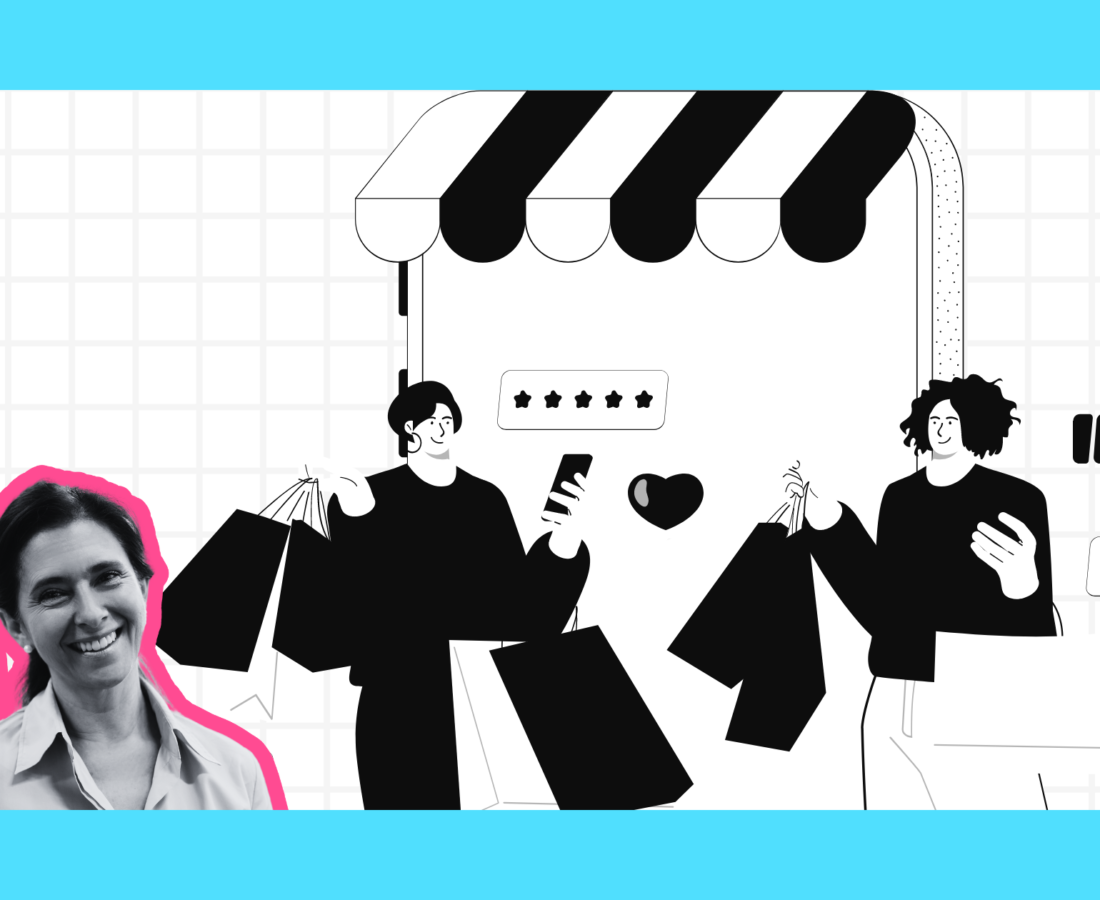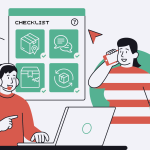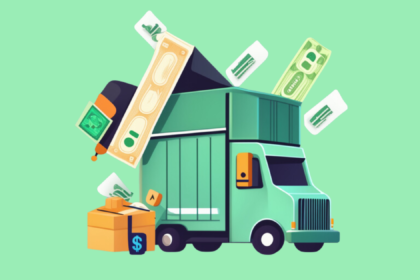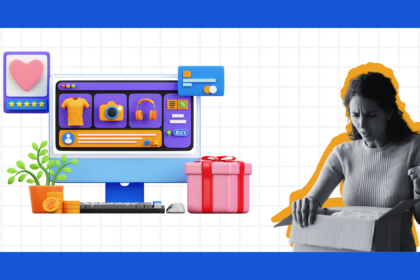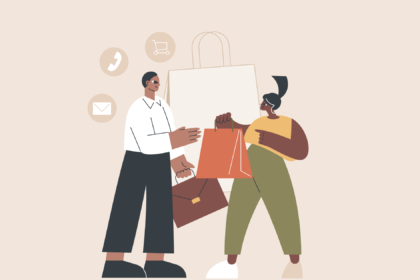The success of an e-commerce business depends on a lot of factors — venturing into new markets, net profits made during a quarter, rapport shared with customers and the general public, offering quality products and services, etc. As a merchant, you initiate and perform a list of activities that contribute to said success — be it by improving the shopping experience, coming up with offers, or leveraging tools.
Success may be a very broad topic but there are narrow, definite ways to measure the outcome of success for particular aspects of your business. One such measure is Customer Lifetime Value, which provides insights into aspects like customer satisfaction, repeat shopping, and revenue generation.
Understanding Customer Lifetime Value
Just like the name says, Customer Lifetime Value is the total amount of money that a customer spends in the time they were doing business with you. In other words, a.k.a. industry terminology, Customer Lifetime Value is a metric that represents the total revenue a customer generates for their business throughout their relationship with your company. Both CLV and CLTV are common acronyms for Customer Lifetime Value and are interchangeably used.
Talking about CLV, it’s a calculation used to assess the long-term financial value of a customer. Take this scenario, you possess a Netflix subscription that you renew for $22.99 every month. Now, if you’ve been a subscriber for more than 9 months, your lifetime value would be $206.91.
The idea behind using Netflix as an example is that CLV is easy to calculate for a subscription-based business. But when it comes to an e-commerce business where product values and consumer spending differ, there is no actual guarantee on the specific amount or time of the customer’s next spending.
However, with a little ‘extra’ effort, you can ensure an assured increase in CLV. But before we get into the efforts, let’s look at how CLV actually spells ‘success’ for your business.
How CLV measures the success of your business
CLV is not just a metric that talks about revenue but also gives you insights on various metrics that spell long-term success for your business.
- Profitability: By subtracting Customer Acquisition Costs (CAC) from CLV, a business can determine the profitability of acquiring and retaining customers (a metric known as adjusted CLV or CLV to CAC ratio).
- Retention rates: A non-subscription model and higher CLV often translate to better customer retention rates, i.e., an indication that they are satisfied with the products or services.
- Long-Term Strategy: CLV encourages businesses to focus on long-term success, thereby promoting strategies that prioritize customer satisfaction, loyalty, and even brand advocacy.
It is clear that CLV is a powerful metric that measures the success of a business by assessing its revenue generation, profitability, customer retention, etc. So, what do e-commerce businesses generally do to improve their business’ CLV?
The impact of post-purchase experiences on CLV and other metrics of growth
ICYMI, the post-purchase experience comprises of all customer interactions that take place once the order has been shipped until it reaches the customer’s destination or in some cases is making its way back to the warehouse. It makes up 50% of the overall order experience, meaning that when done right, it is a goldmine of opportunity to increase retention and so much more.
However, most businesses (like you, probably) neglect the customer experience after checkout. This may not be a good move, considering the post-purchase, when unattended is a time that is marred by frequent issues such as delays and customer rants on support channels that have the power to jeopardize the CLV.
Customers don’t care much about the workings of the parcel behind the screen. What matters is that customers have a low tolerance for delivery issues and will shift to a competitor after one poor experience. This brings us to the first metric, retention rates.
- Customer Retention Rate (CRR) – A measure to identify if your customers are indeed happy and are still shopping with you at the end of a period compared to at the start of it. Remember, increasing your customer retention rate even by 5% could lead to increased profits of between 25% and 95%.
- Customer Acquisition Costs (CAC) – In simple terms, Customer Acquisition Cost (CAC) is the cost of convincing a potential customer to purchase your product/service. This includes the cost of marketing and sales. When businesses have low retention rates (thanks to poor CX), their immediate choice is to look after new customers. What they don’t realize is that it is 5x to acquire a new customer than retain an existing customer.
- Customer Lifetime Value (CLV) – Low retention rates and high acquisition rates are a direct sign of low CLV because naturally, the longer a customer chooses to buy from a business, the greater their lifetime value. High CLV rates are a must for businesses as loyal customers are worth 10 times as much as the value of their first purchase.
The message is loud and clear. For a higher CLV, you have to create a great post-purchase experience and that brings us to the focus of this article and the question in your head — what should I be doing to my post-purchase if I need to increase my CLV?
We’ve heard you and drafted a list of post-purchase techniques that you need to follow if your focus is CLV.
Post-Purchase Strategies to Boost CLV
1. Data-driven personalization
Data-driven personalization in Customer Experience (CX) refers to leveraging data analytics and technology to create highly customized and relevant experiences for each customer such as tailoring interactions, product recommendations, and other content based on their past behaviors, preferences, and demographic information.
In a report by Salesforce, 52% of the consumers said they would switch to a different business if the CX was not personalized.
Here are some examples of data-driven personalization in post-purchase CX.
1.1 Leverage Customer feedback to improve post-purchase engagement and operations
There’s no better way for businesses to gain insights into their customers’ experiences and preferences than actively seeking and analyzing customer feedback. Know what your customers think of your post-purchase operations, what their expectations are, etc, and work on meeting exceeding them.
Here’s how customer feedback contributes to data-driven personalization and improving CLV:
- Engagement analytics: Leverage insights from post-purchase engagement KPIs like tracking page visits, open and click-through rates on notifications to include personalized and branded elements that put your brand on top of the customers’ minds.
- Optimize fulfillment (delivery and returns) operations and post-purchase CX: Gain access to a goldmine of data in the form of customer satisfaction feedback on delivery and return-related experiences to make post-purchase enhancements.
P.S. Apart from customer feedback, regularly tracking your customers’ parcels in the delivery and returns phases also gives you shipping intelligence on aspects such as on-time performance, returns trends, and other insights, etc, that help you unlock opportunities that improve your post-purchase operations.
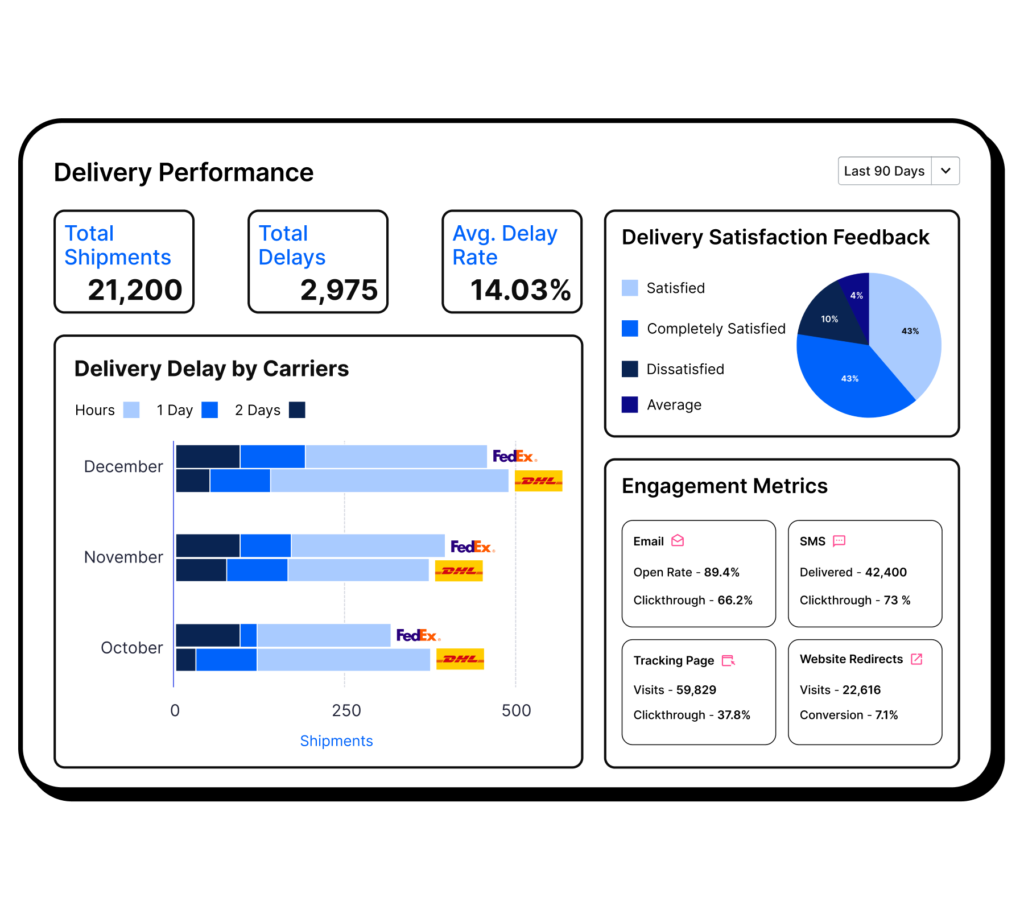
1.2 Repeat purchase strategies
Providing a great post-purchase CX is 90% of the work done to ensure your customers keep picking your business over your competitors. All they need is a little encouragement in the form of product recommendations & promotions that double the chances.
- Personalized product recommendations: Convert visits to your order tracking page into repeat purchases with personalized product recommendations based on your customers’ recent purchases.
- Targeted marketing campaigns: Use your tracking pages and email campaigns as real estate to drive more sales through targeted campaigns, discounts, and sales promotions.
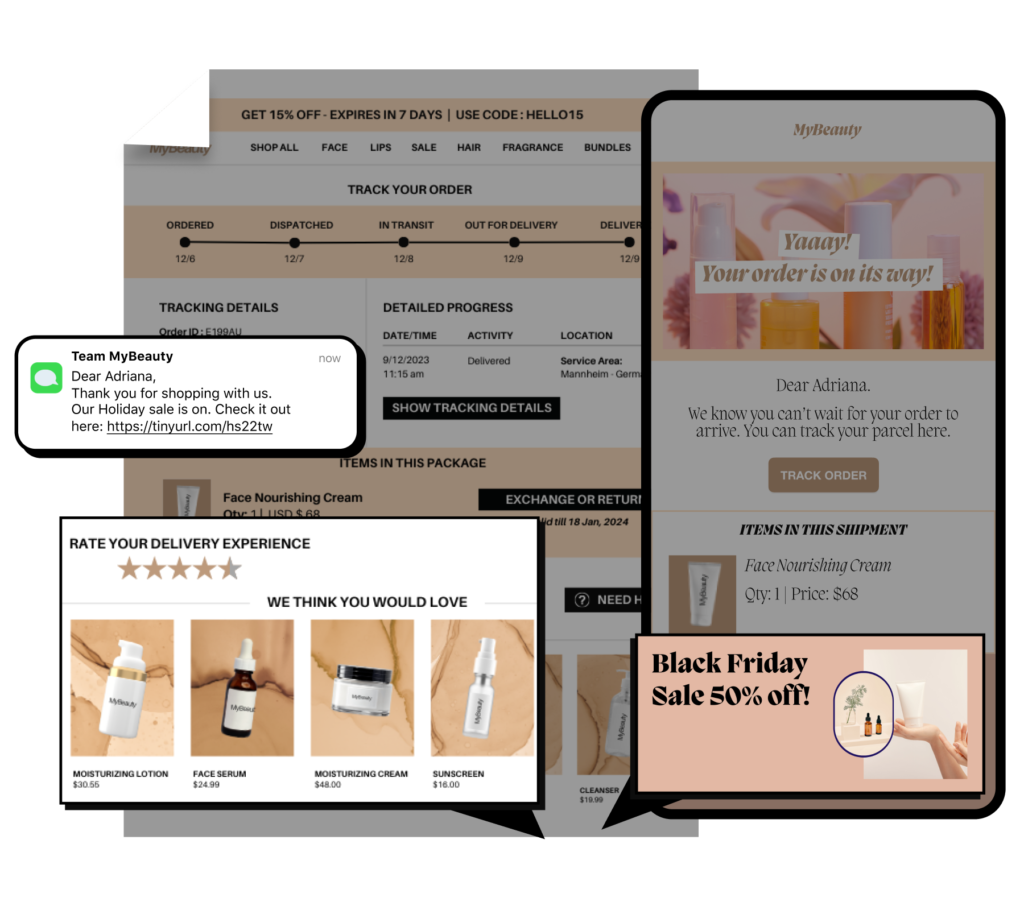
2. Effective post-purchase customer engagement
Personalization in post-purchase marketing is an essential part of keeping customers really excited about repeat shopping with you but it doesn’t work unless your customers are happy with the delivery experience they’ve received. And trust me, this is an important hurdle to cross as the post-purchase is a phase where issues are frequent and have the potential to create bad experiences that demotivate customers from choosing you.
This is where an effective post-purchase engagement strategy that nurtures customer relationships, drives additional sales, and creates a positive feedback loop comes into place.
- Proactive notifications: Make use of a post-purchase automation platform that sends out proactive alerts for delivery issues and enables you to proactively notify customers. Even if you are unable to take measures to correct the course, your customers will appreciate your efforts and thereby give you a chance to avoid a bad delivery experience.
- Timely shipping updates: Even if everything seems to be going well, you can still capitalize on the post-purchase opportunity to engage your customers with timely email and SMS shipping notifications that keep them in the loop of their orders and mitigate their anticipation.

3. Seamless returns experiences
Most e-commerce merchants often assume returns to be a bad thing for their e-commerce business but that’s only when they’re left unattended. When taken care of in the best possible way, returns are the perfect opportunity to turn a potentially negative interaction into loyalty and growth.
Here are some ways businesses can provide a returns process that builds customer trust and contributes to CLV growth.
- Easy returns: As the first step to making returns hassle-free, you can begin with an easy initiation process and follow up with return status updates and self-serve return status tracking.
- Promoting exchanges over refunds: Not all returns have to be refunded and end in a lost sale. Instead, you can offer convenient exchange and store credit options that encourage customers to confidently shop with you again.
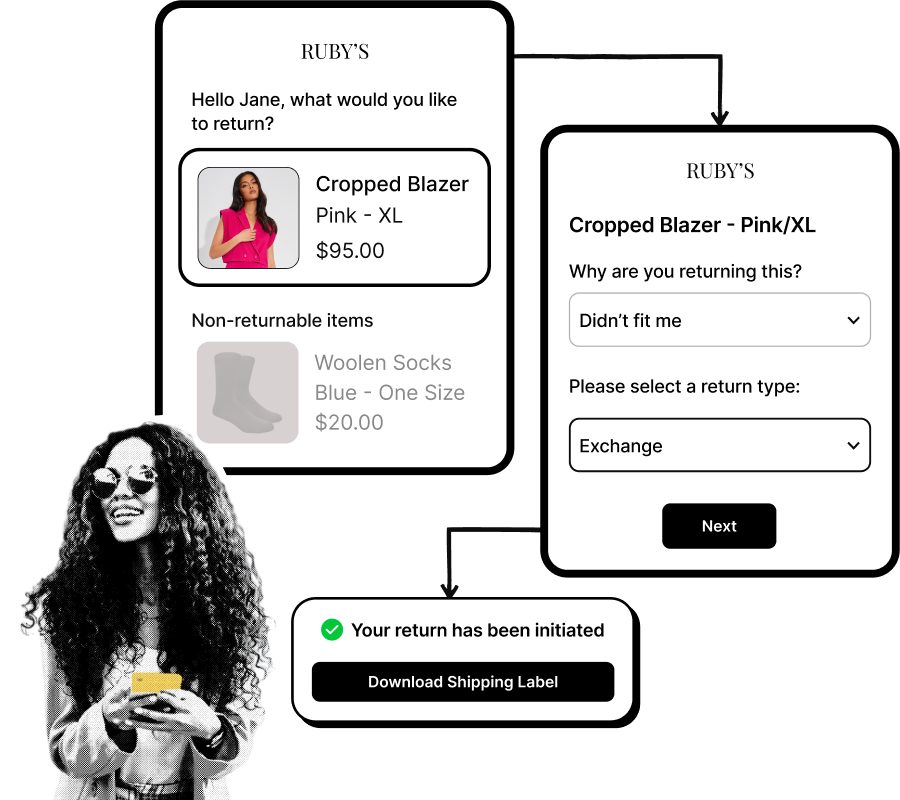
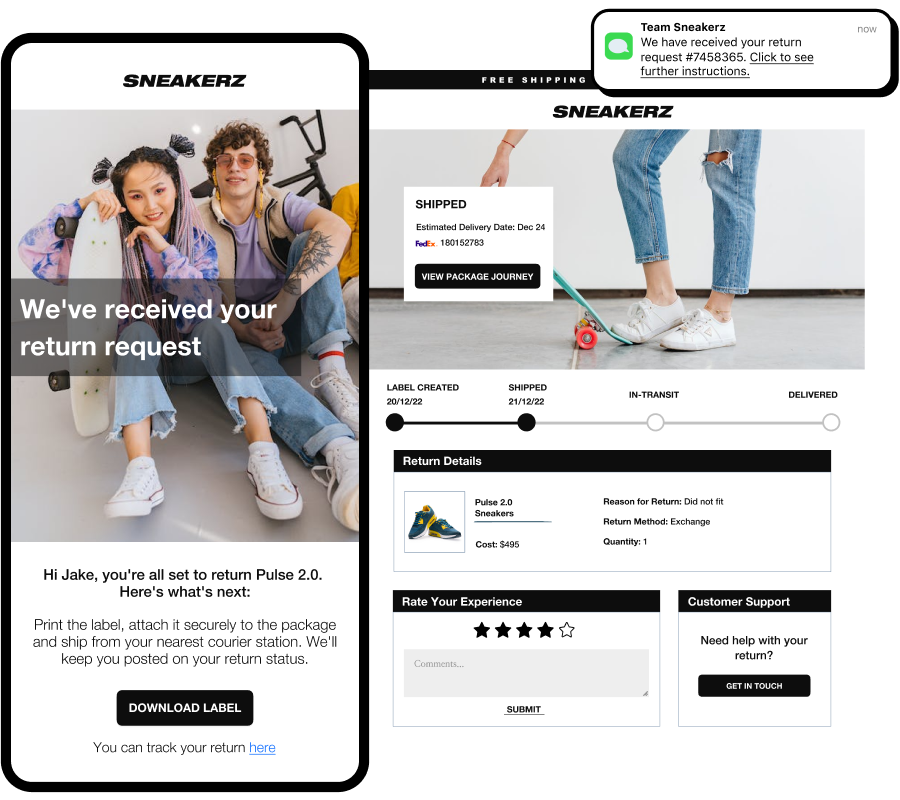
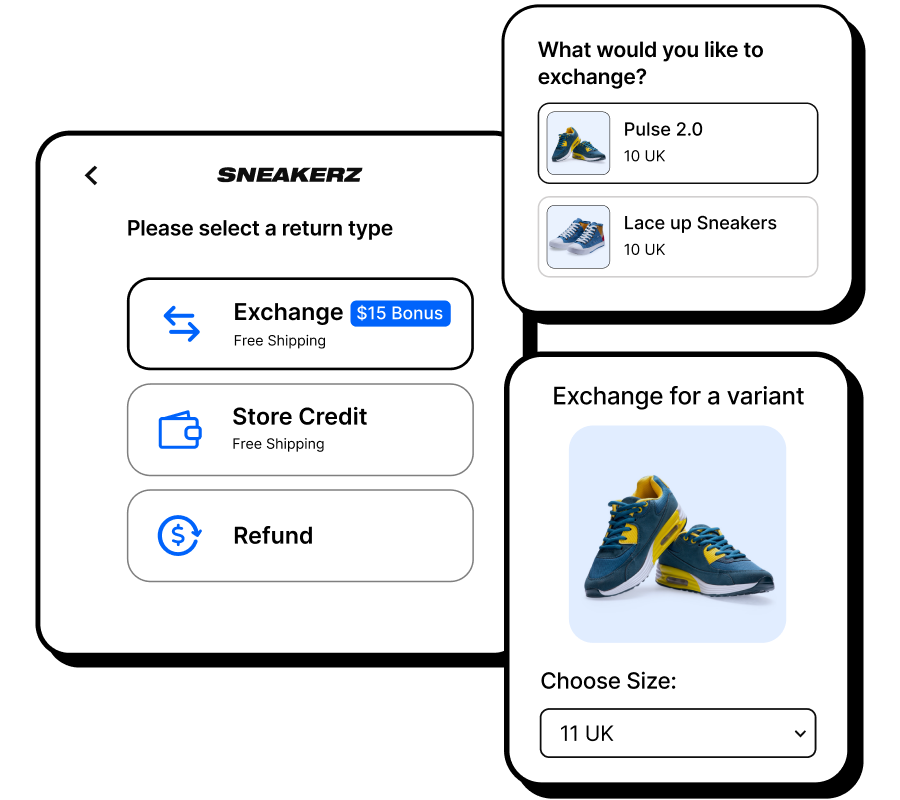
Final word
A great way to measure the success of yours is the strong customer relationships that are created from positive customer experiences, fortified by your post-purchase phase efforts such as hassle-free returns, hype-personalization, and effective customer engagement.
These are no secret ingredients but something businesses like yours have unwillingly neglected over the years for multiple reasons. So, if you’re looking to supercharge your post-purchase strategies and improve CLV, LateShipment.com is your one-stop solution.
With LateShipment.com’s suite of solutions, businesses can seamlessly provide seamless post-purchase experience that customers crave and ultimately boost loyalty and revenue.
Interested to know more? Check out the different ways in which LateShipment.com can work for your e-commerce business.
Still have queries? Talk to us
